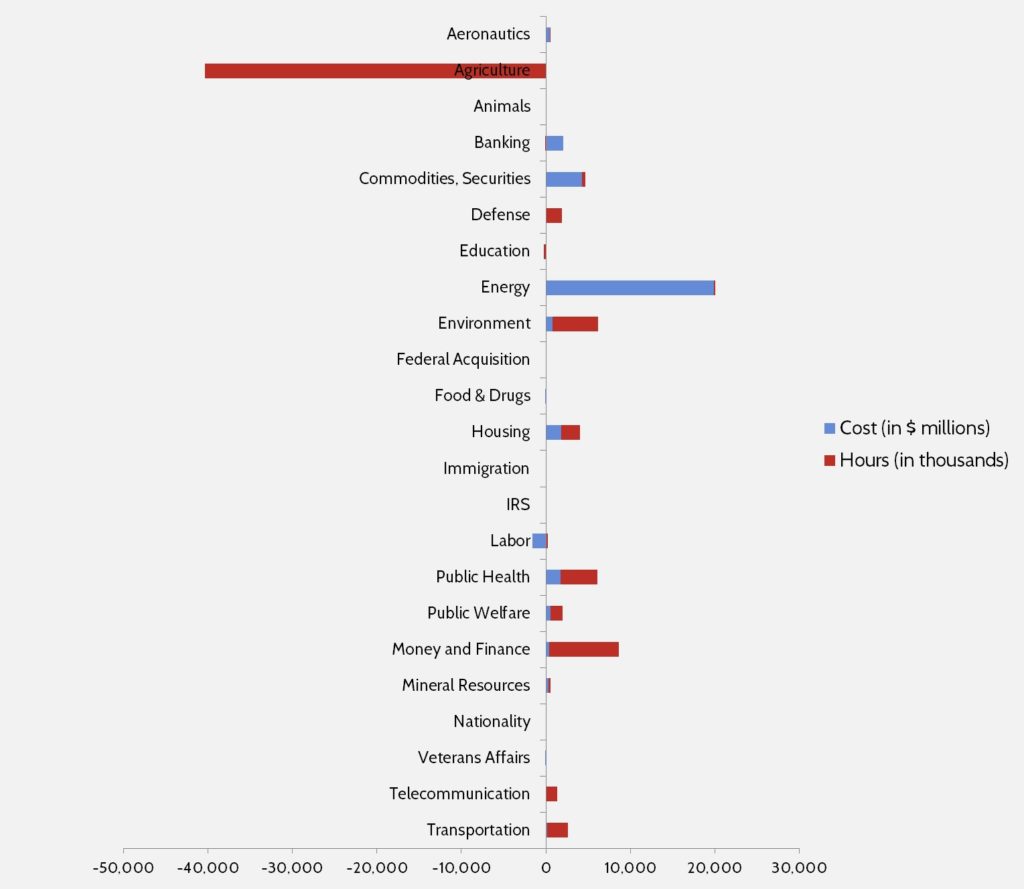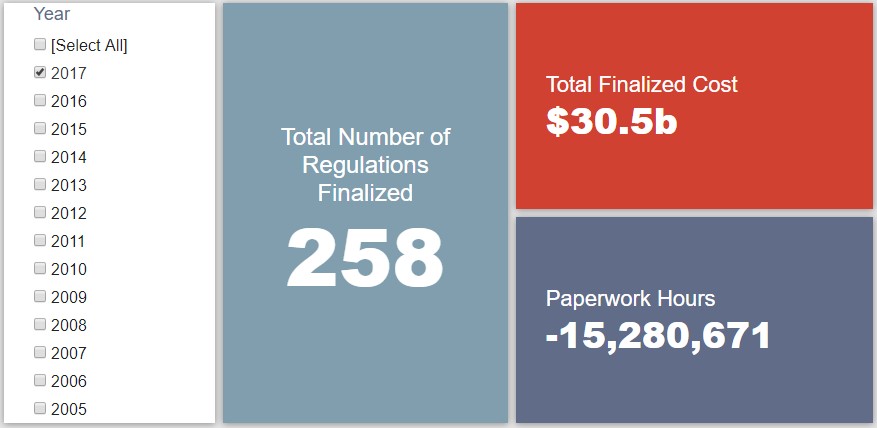Week in Regulation
December 18, 2017
Future Regulatory Plans Come Into Focus
In terms of new regulatory actions, this past week marked another relatively subdued one. Various agencies actions combined for only $10 million in net regulatory costs and 55,425 hours of paperwork. A Department of Housing and Urban Development (HUD) deregulatory measure led the week. However, the true fireworks for the week came as the Trump Administration released its regulatory plan for the coming year as well as an update on its progress in attaining regulatory reforms. The per capita regulatory burden for 2017 is $274.
Regulatory Toplines
- New Proposed Rules: 44
- New Final Rules: 65
- 2017 Total Pages of Regulation: 59,836
- 2017 Final Rules: $30.5 Billion
- 2017 Proposed Rules: $58 Billion
The American Action Forum (AAF) has catalogued regulations according to their codification in the Code of Federal Regulations (CFR). The CFR is organized into 50 titles, with each title corresponding to an industry or part of government. This snapshot of final rules (a change from earlier versions) will help to determine which sectors of the economy receive the highest number of regulatory actions.
Tracking Regulatory Modernization
The main highlight of the past week in regulatory reform came not from a particular rulemaking, but from the Trump Administration finally releasing its Unified Agenda. For the first time ever, the Agenda specifically categorizes deregulatory (versus regulatory) actions. In this edition, the administration plans on 448 deregulatory actions and 131 regulatory actions – a ratio of more than 3 to 1.
In concert with its Unified Agenda, the administration also provided an update on its progress under Executive Order 13,771 (EO 13,771). For Fiscal Year 2017, the administration claims: 67 deregulatory actions against only 3 regulatory actions (a 22-to-1 ratio) and $8.1 billion in total cost savings ($570 million annually). Looking ahead to 2018, the “regulatory budget” caps established under EO 13,771 direct agencies to reach $9.8 billion in total cost savings. AAF took a closer look at the coming “budget caps” here.
In terms of actual rulemakings, the most notable deregulatory action came from a HUD rule focused on streamlining certain public housing programs. Building upon a past rule and implementing provisions of the Fixing America’s Surface Transportation Act (FAST Act), this measure could provide $31.2 million in cost savings. However, the rule does not directly address whether it falls under EO 13,771, nor is there a Unified Agenda entry categorizing it as such.
Click here to view AAF’s examination of the administration’s progress under the “one-in, two-out” executive order through the end of Fiscal Year 2017.
Affordable Care Act
Since passage, based on total lifetime costs of the regulations, the Affordable Care Act has imposed costs of $53 billion in final state and private-sector burdens and 176.9 million annual paperwork hours.
Dodd-Frank
Click here to view the total estimated revised costs from Dodd-Frank; since passage, the legislation has produced more than 82.9 million final paperwork burden hours and imposed $38.9 billion in direct compliance costs.
Total Burdens
Since January 1, the federal government has published $88.6 billion in compliance costs ($30.5 billion in final rules) and has cut 10.7 million paperwork burden hours (due to 15.3 million in reductions from final rules). Click below for the latest Reg Rodeo findings.












